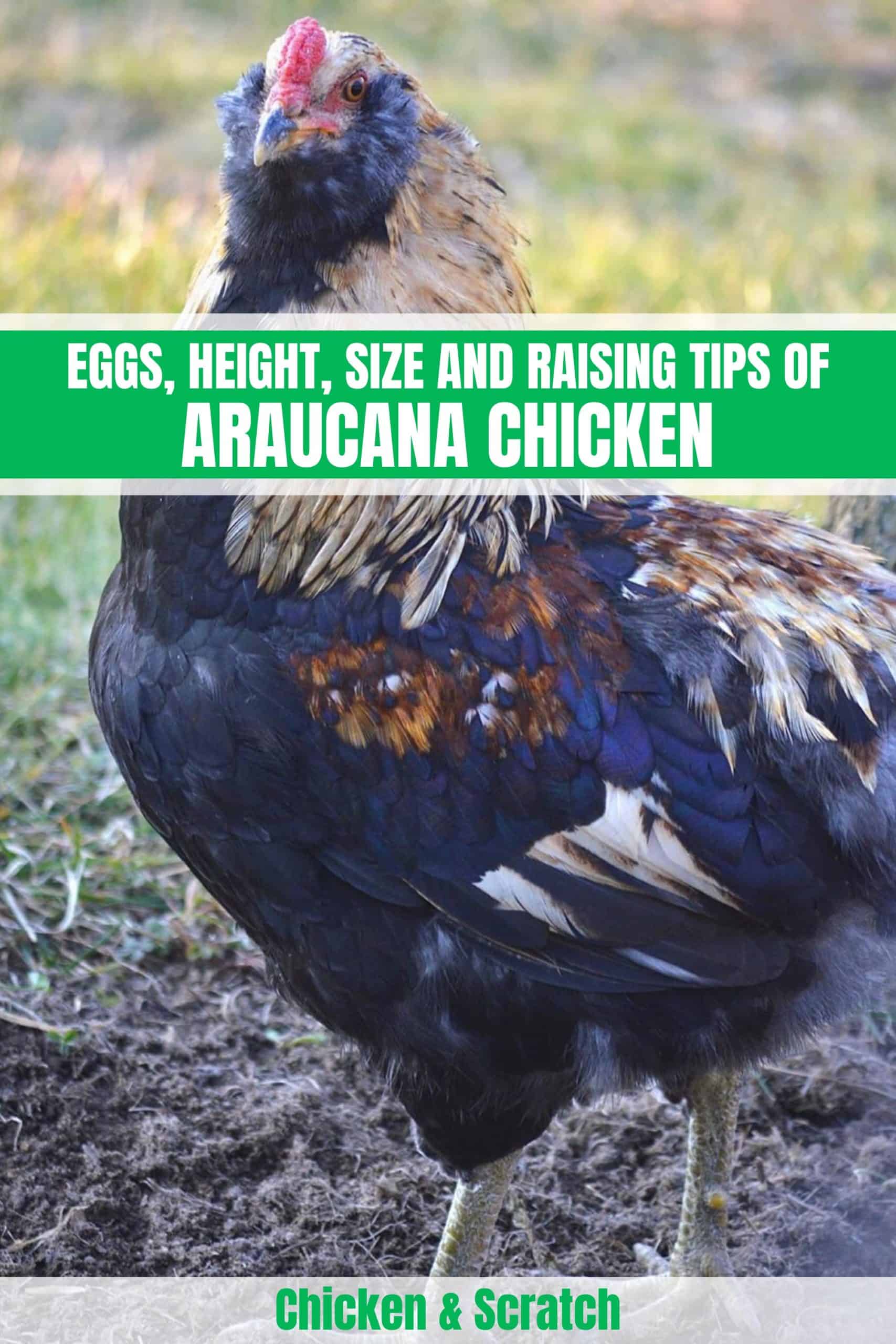Eye-catching chickens that make an impression whether inside or outside of the coop, Araucanas are pretty poultry with unusual blue eggs.
From their distinctive feathers to their energetic personalities, these chickens are bred to stand out. With average layers, good meat birds, and adventurous free rangers, Araucanas make an excellent addition to a flock of any purpose.
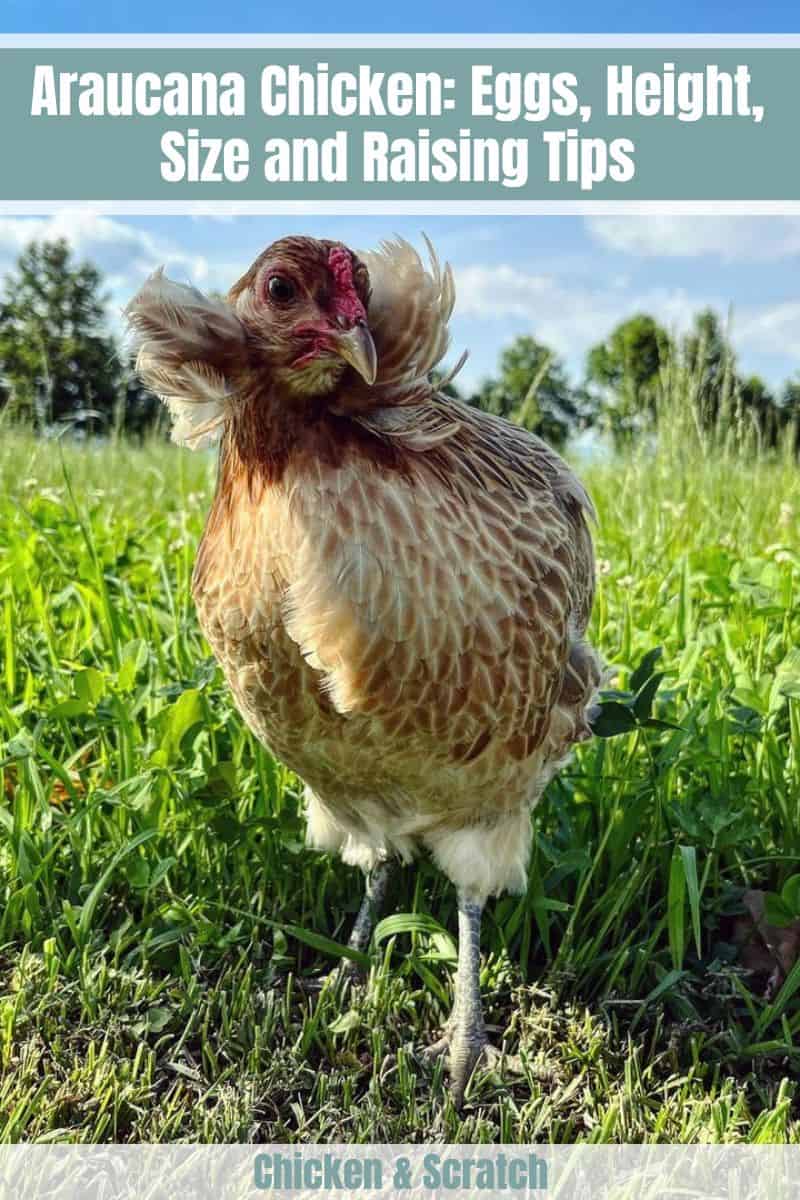
History of Araucana Chicken
While their early history is not documented, in the early 20th century, Araucana chickens were commonly spotted in South America.
Salvador Castello, a Spanish aviculturist, saw them while visiting Chile in 1914 and gave them the name Gallina Araucana. This is because many of the birds were found in the Araucania part of Chile, among the Mapuche people known by the Spanish as Araucanos.
Castello thought the chickens belonged to an entirely unique new species, reporting his observations in the Hague at the First World’s Poultry Congress in 1921. Later, however, the Araucana was established as belonging to the same species of other domestic chickens.
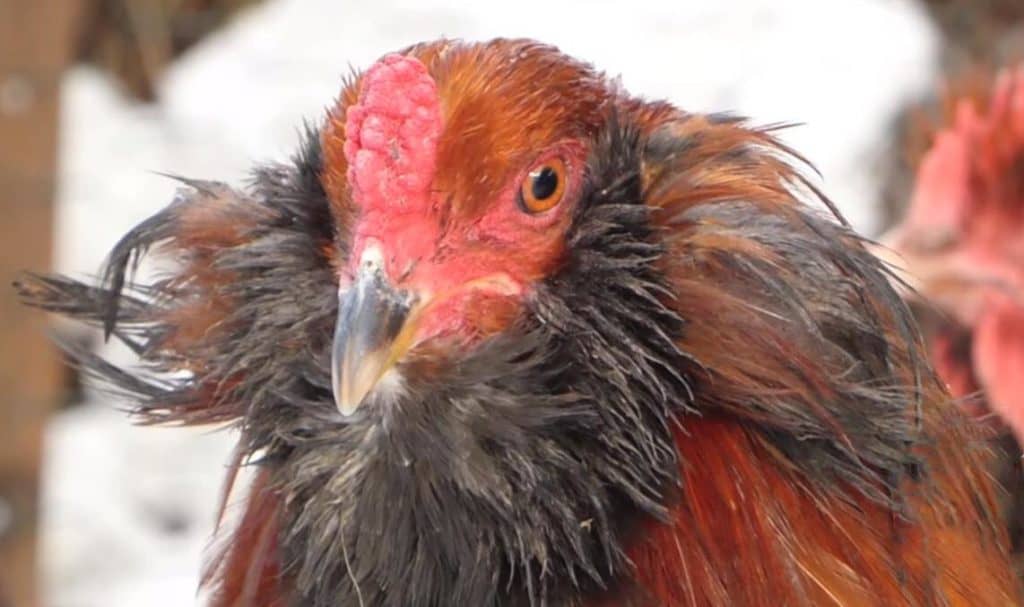
Another early misconception regarding the Araucana chicken was that its blue egg was unique among the breeds of chickens. The blue eggs of Araucanas were taken to Australia in the 1930s.
The breed became standardized in the 1980s. At various times within the early twentieth century, South American chickens with blue eggs were introduced among the British Isles.
The modern British Araucana has its forebears in a wrecked Chilean ship in the Hebrides. British Araucanas were largely bred in Scotland by George Malcolm; they were standardized in either 1969 or 1974. The United States has two standardized breeds of blue egg chickens.
the Araucana, with its ear tufts and lack of rump, was standardized in 1976, and the Ameraucana, which has a tail, beard, and muff, which received a 1984 addition to the Standard of Perfection.
Many debates have been held regarding the Araucana’s origin in the United States. It may have been present prior to the arrival of European chickens after Columbus’s arrival in 1492, or the breed may have accompanied those Europeans as one of the included breeds. Such extended debates have not been conclusive.
Araucana Chicken Breed Standard
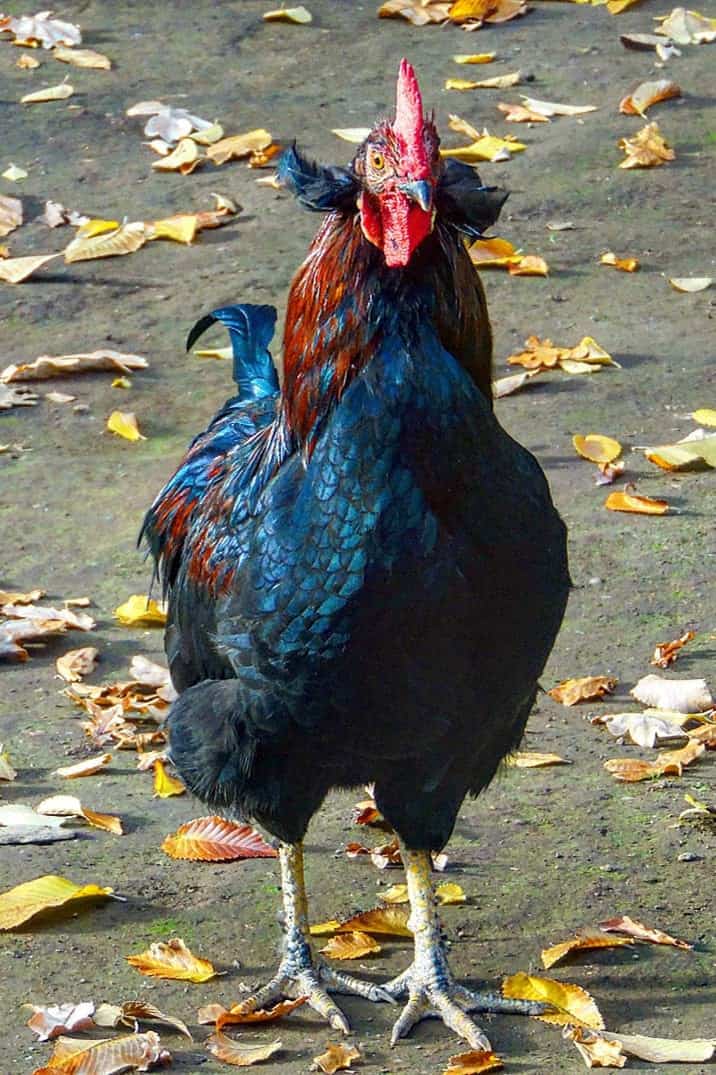
Both the APA, or the American Poultry Association, and the ABA, or American Bantam Association, require the Araucana to be rumpless and to have tufts of feathers that protrude from each side of the neck and head. This rumpless characteristic does not merely denote a lack of tail feathers, but an actual dearth of a tail bone.
Other standards of appearance, according to the APA, include:
- A pea comb that is medium-sized and is demarcated by three vertical ridges from the beak’s top to the head’s top, the middle ridge of which is higher than those at the ends.
- Willow legs among all recognized colors that exist of large fowl Araucanas, apart from those varieties of black and white which should have black and yellow legs, respectively.
- A weight of five pounds for cocks, four pounds for hens and for cockerels, and three and a half pounds for pullets.
Disqualifications for Araucanas, according to the APA, are combs of any type other than Pea, a lack of tufting at the ears, a tail or rudimentary presence of one, feathers or stubs on the shank, white skin, toes that are fewer or more numerous than four, and eggs of any hue other than blue.
Personality and Temperament
Just as juries are divided on the origins of Araucanas in the United States, there is a divide in how the personality of this chicken is viewed. Enthusiasts claim that these blue-egg bearers are among the friendliest of chickens that they have ever had in a flock. Others swear that the rumpless birds are nervous and flighty.
This could be due to the birds having high energy, which can be seen as nervous although the two features are not synonymous. Those who devote themselves to the breed describe loving interactions between themselves and their Araucanas.
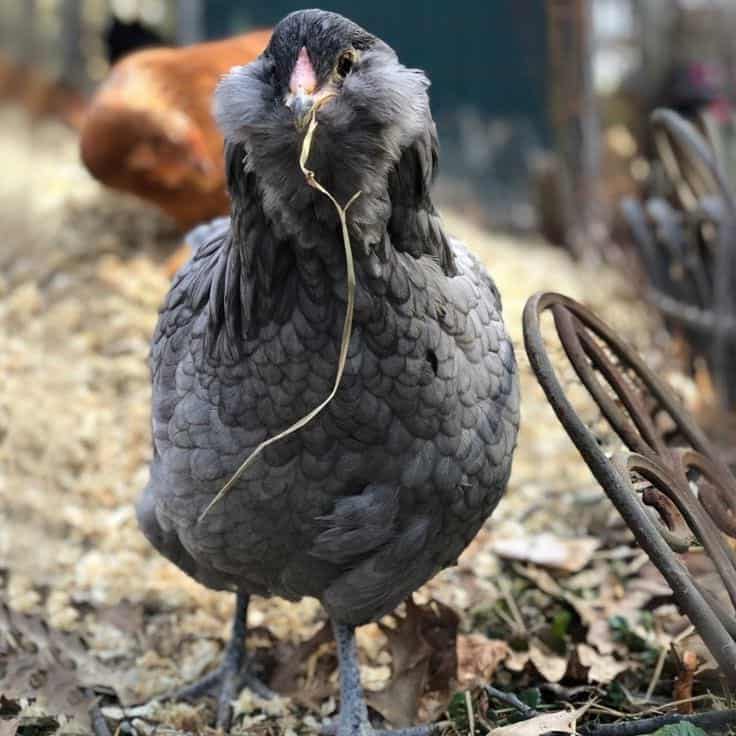
Many breeders who know their birds well recommend Araucanas as a great chicken for kids to raise. Young Araucanas delight in being handled and cuddled, and birds that grow up being handled often will tend to be friendlier adults.
Among the flock, they tend to be placid birds. They are vigorous and hardy, with a tendency toward broodiness that makes them excellent mothers.
Highly active and energetic, this chicken is a born free-ranger that is naturally curious and can be a little boisterous. They like a little more room to run than other chickens of their size, but make the most of nature’s buffet for them.
Araucana Chicken Egg Laying
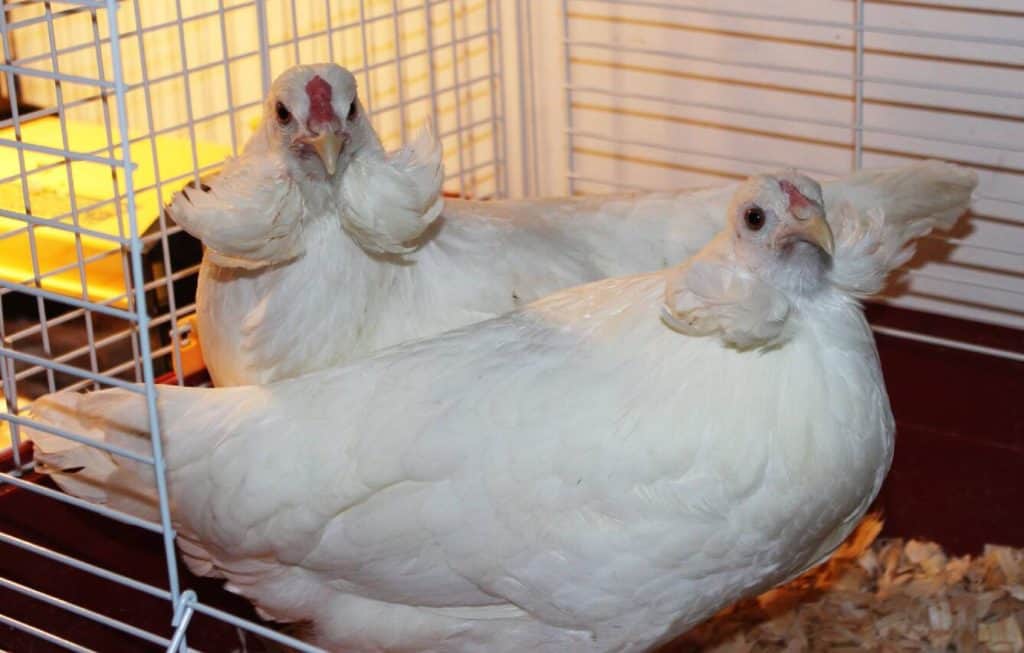
As with many other broody chickens, Araucanas can easily be allowed to hatch and raise their own chicks, rather than relying on an incubator. While they take brief cold weather breaks in laying, their blue eggs appear regularly during the warmer months.
An average hen lays between 150 and 180 eggs per year, each striking in hue and delicious in taste. Unfortunately, scientists have long since debunked the widespread rumor that blue eggs contain less cholesterol. Nevertheless, their lovely eggs leave an impression that is lasting.
One quirk of hatching Araucana chickens is that the chicks, having hatched, mature much faster than do chicks of other poultry breeds. Araucana chicks grow into their mature feathers much faster than such breeds as Rhode Island Reds or ISA Browns. A watchful eye must be kept on the eggs at hatching time, however.
The gene responsible for the charming ear tufts of the Araucana also reduces the successful hatch rate. This is why it is usually difficult to find Araucanas at hatcheries; usually, a buyer must go to breeders to find chicks or grown birds.
Do not let the low hatch rate fool you, however; those birds who survive are exceptionally hardy and vigorous.
Health Issues and Care
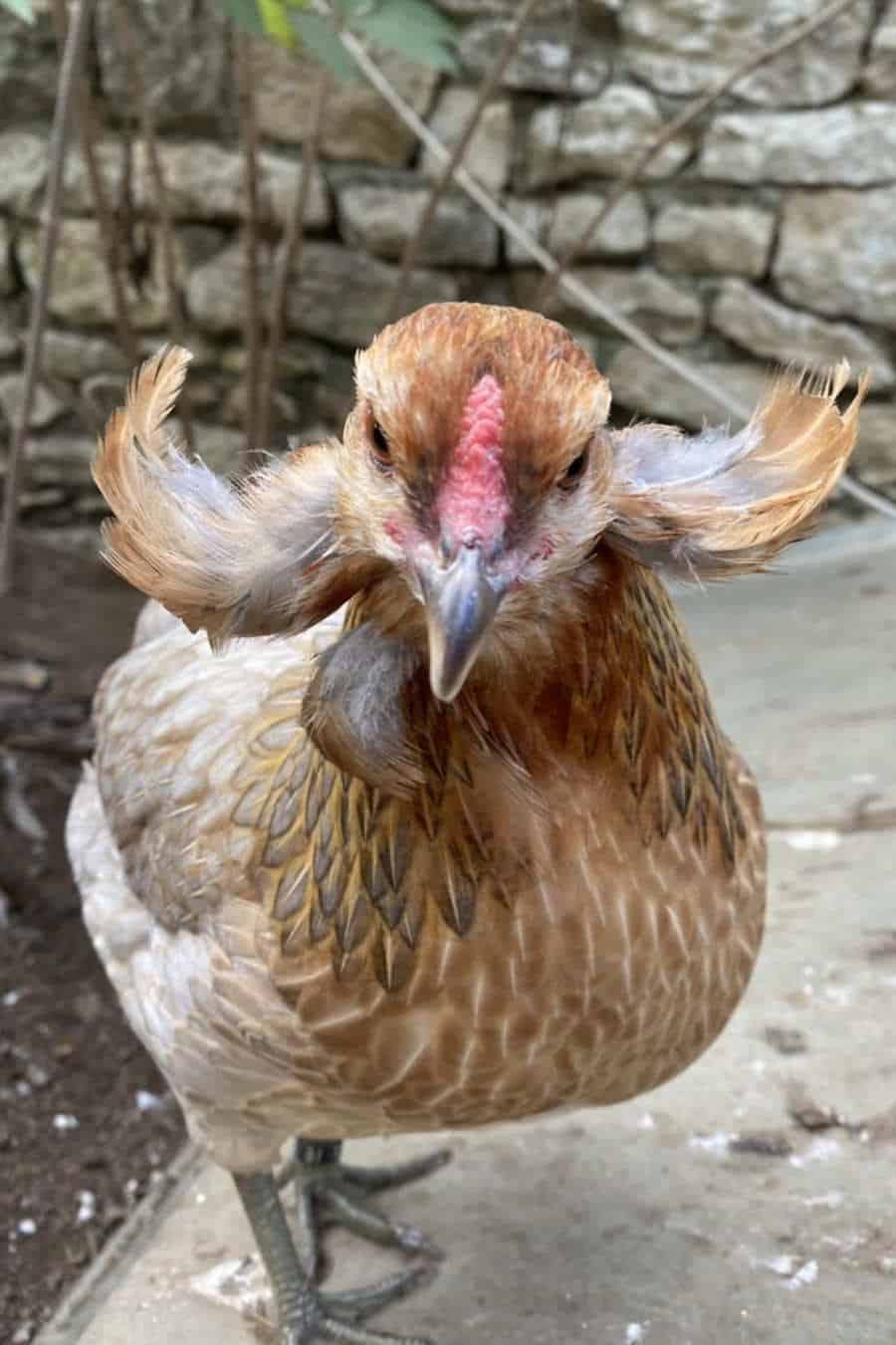
Among the most prominent health issues of Araucanas is the gene that produces the low hatch rate. Care for them is the same as basic chicken care. Araucanas are tough birds that can endure hot summers and cold winters with relative ease. They are healthy, athletic birds that enjoy sticking their beaks into everything.
Keeping Araucanas is best done in a place where they will have plenty of room to run about and explore. They need a standard chicken coop with sufficiently roomy egg boxes. Coops should be built snugly against weather and predators.
As with all chickens, a certain amount of grooming is in order to be on the lookout for lice, mites, and other parasites. A regular check once a week suffices for most areas. These birds have a greater likelihood to find themselves in new areas where pests might bother them due to their adventurous natures, so this weekly check should not be neglected.
They love to forage, seeking out new places to scratch and dust bathe. A breeder or a vet can offer recommendations on de-worming the birds properly.
6 Tips for Raising Araucana Chickens
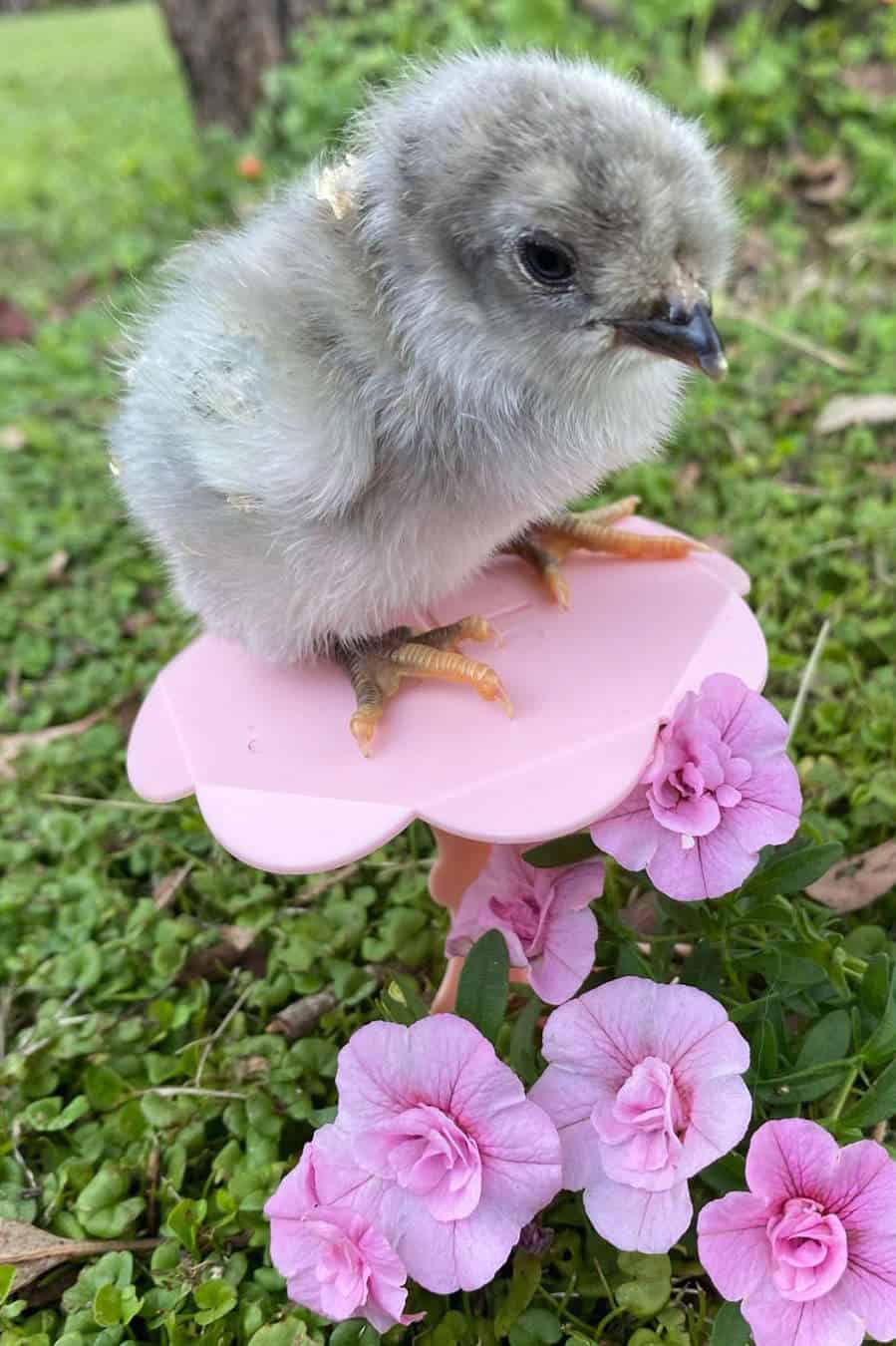
- Be aware of the cruelties of the tufted ear gene and its effect on hatching these chicks. It can be extremely disheartening to watch those lovely blue eggs with great anticipation only to have the chick not make it. If you decide to have kids help you with these birds, this is a factor to keep in mind.
- If a hen has been broody for too long, is dropping weight, and is looking a little rough around the edges, help her out by moving her from eggs that have not been successful in hatching.
- Handle the young often. They are naturally friendly birds that will come to dote on their humans when they have received sufficient interactions with them as chicks. To enjoy lifelong positive relationships, as with many creatures, start young.
- Keep them fenced if your neighbors are not fond of chickens. Araucanas travel significantly more than do typical chickens. They often enjoy following the same routes to special spots for treats. A fenced yard is a must; if they find out that there are good pecking spots in a neighbor’s yard, it will be impossible to keep them from it.
- Give them room to rove. These chickens love to run and are fairly skilled flyers as far as chickens go. They are also less attractive to predatory animals than are more staid and less energetic chickens. These rugged flocks are fit to travel a bit and love it.
- Do not worry much about a special diet. At least in warmer climates and in warmer months, Araucanas are talented foragers. Do be sure to give them a good mix to get them laying in spring, with plenty of nutrients for those delicious blue eggs.
Summary
Araucanas are a fairly unusual breed to find in an average backyard, but they are a welcome addition to any flock. Good meat birds, they are also average layers with medium-sized eggs that are above average in appearance. They have lively personalities, enjoy people, and have active lifestyles.

Joseph Hudson has been raising chickens for over 15 years. In 2018, he completed the Agriculture & Natural Resources program at Mt. San Antonio College. He currently raises over 1400 chickens on his 7.5-hectare farm. He keeps sharing his experience on raising healthy and happy chickens on Chicken Scratch The Foundry.
